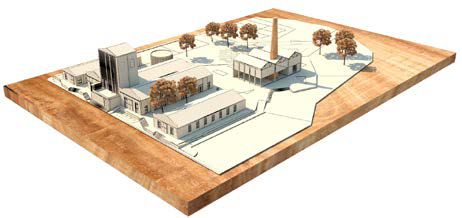"A landscape on rails" Proposal for the urban-railroad cultural landscape on the south of the bay and its associated industry
##plugins.themes.bootstrap3.article.main##
Abstract
Most Latin American cities owe their genesis, the image and identity of their cultural landscape, to a process of industrialization, generally associated with railways and port activity that was consolidated at the beginning of the 20th century. When it fell into disuse, after the sixties, it generated an abandonment, deterioration or replacement of valuable structures that need to be preserved and revitalized, as they are testimony to the birth of the modern city. In Cuba, especially in Havana, there are conditions to recreate, from the interpretation of the urban railway landscapes, cultural environments that encourage the incorporation of innovations and new projects that facilitate the development of the communities in which this industrial heritage is located. The large factories or buildings associated with the railway, usually high-quality buildings, can be elements that promote urban renewal processes that preserve their history and maintain their character and identity, without replicating the deplorable constructive criteria.
##plugins.themes.bootstrap3.article.details##

This work is licensed under a Creative Commons Attribution-NonCommercial-ShareAlike 4.0 International License.
- Attribution — You must give appropriate credit , provide a link to the license, and indicate if changes were made . You may do so in any reasonable manner, but not in any way that suggests the licensor endorses you or your use.
- NonCommercial — You may not use the material for commercial purposes .
- No additional restrictions — You may not apply legal terms or technological measures that legally restrict others from doing anything the license permits.
- ShareAlike — If you remix, transform, or build upon the material, you must distribute your contribution under the same license as the original. NOTE: This point applies to numbers 1 to 20 of the magazine with the previous CC-BY-NC-SA 4.0 license. Does not apply to the new CC BY-NC 4.0 license from Volume 11, Number. 21 (2024).
References
Aldama Y., Gutiérrez A., et al. (2004). La identidad de la pro- vincia y sus municipios: historia de Diez de Octubre. La Habana.
Areces, A. (2011). Arquitectura industrial, restaura- ción y conservación en tiempos de crisis. Revista de cultura y ciencias sociales. Ábaco, Vol. 4, No. 70.
Collazo G., Areces A., et al. (2015). La Bahía de La Ha- bana. Memoria urbana, refuncionalización y valorización del patrimonio industrial. La Habana: Editorial CICEES.
Guzmán A. R y Fernández G. (2003). El patrimonio industrial desde perspectivas multidisciplinarias. Re- vista bibliográfica de Geografía y Ciencias Sociales, VII (480).
Montaner, J. M. (1990). El protagonismo del conte- nedor. Espacios para el arte y la cultura. Rev. A&V Monografías de Arquitectura y Vivienda. Nuestros museos. #26.
Trachana A. (2015). La recuperación de los paisajes industriales como paisajes culturales.
Zanetti O. y García A. (1987). Caminos para el azúcar. La Habana: Editorial de ciencias sociales.






















